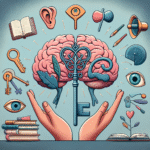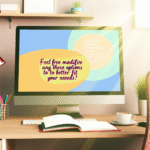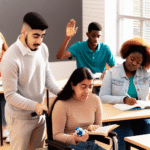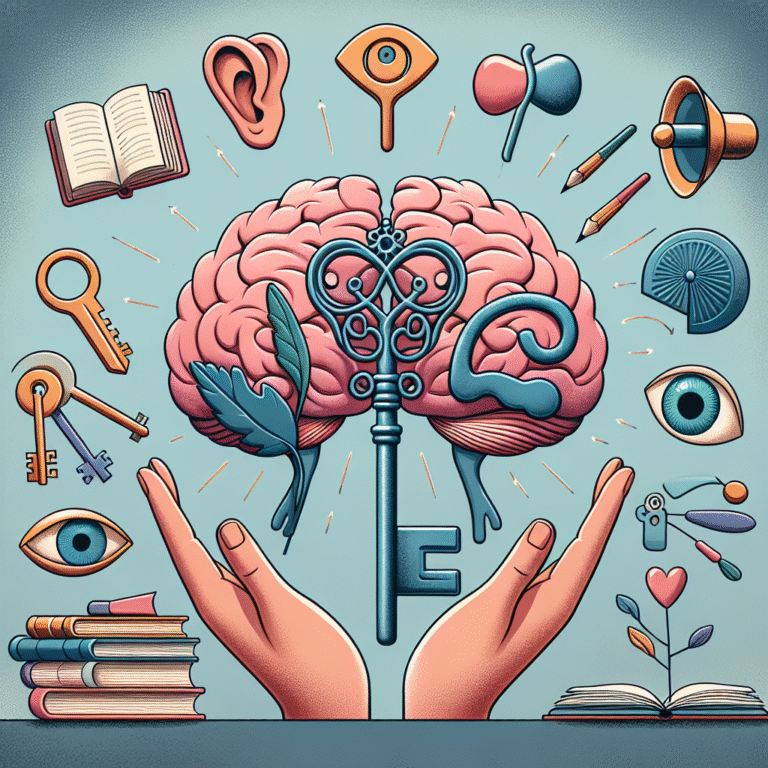Art as Therapy: Navigating Learning Disabilities through Creative Expression – The Ultimate Guide to Unlocking Potential
Introduction
In a world that often prioritizes conventional learning methods, the beauty of creative expression shines as a beacon of hope, particularly for individuals facing learning disabilities. Art as Therapy: Navigating Learning Disabilities through Creative Expression is emerging as a powerful and transformative approach that allows people to communicate, process emotions, and build confidence in ways that traditional educational strategies may not. This article will explore the vital role of art therapy, provide unique insights into its implementation, and illustrate how creative expression can become a lifeline for those seeking to navigate the challenges associated with learning disabilities.
Through case studies, insightful data, and an in-depth exploration of art as therapy, we will uncover the ways in which creative practices can bridge the gap in learning for individuals, fostering resilience and unlocking potential.
The Intersection of Art and Learning Disabilities
Defining Learning Disabilities
Learning disabilities encompass a wide range of disorders that affect the ability to acquire and use academic skills. These can include difficulties with reading (dyslexia), writing (dysgraphia), and mathematics (dyscalculia), among others. Understanding these disabilities is crucial for educators, parents, and healthcare professionals to develop appropriate interventions.
The Need for Creative Outlets
While traditional methods of education face challenges, the importance of incorporating creative outlets cannot be understated. Art as Therapy: Navigating Learning Disabilities through Creative Expression allows individuals to transcend academic constraints and convey thoughts, emotions, and ideas visually. This not only enhances self-expression but also improves self-esteem and emotional well-being.
Art as Therapy: Why It Works
The Psychological Foundation
Art as therapy integrates psychological principles with creative expression. It allows individuals to externalize their feelings and thoughts, providing a non-threatening medium for communication. Research shows that engaging in artistic activities can activate the brain’s reward system, promoting a sense of achievement and joy—especially important for those with learning disabilities who might frequently encounter academic frustrations.
Case Study Insight: The Drawn Emotion Project
A notable case study involved a program called the Drawn Emotion Project, which worked with children who had learning disabilities. Participants were given art supplies and encouraged to draw their emotions. Notably, children who struggled with verbal communication found a voice through their art, showcasing feelings of anxiety, frustration, and hope. The initiative provided critical insights into each child’s emotional landscape, enabling tailored support and fostering a sense of community and belonging.
Enhancing Cognitive Function through Art
Engaging in creative activities has been shown to improve cognitive function, allowing individuals to develop better problem-solving skills, focus, and attention. There’s a direct correlation between engaging in art and enhanced executive function abilities, which are often problematic for individuals with learning disabilities.
Practical Applications of Art Therapy
Creating Structured Art Programs
To effectively use art as an intervention, structured programs need to be built around the principles of art as therapy. These programs should consider the individual needs of each participant, focusing on various art forms, from painting to sculpting.
Example Program Framework
| Program Component | Description |
|---|---|
| Goal Setting | Identify individual goals related to emotional expression and skill development. |
| Art Sessions | Regularly scheduled sessions that encourage exploration and experimentation with different mediums. |
| Reflection | Fostering a space where participants discuss their artwork and emotions. |
| Parental Involvement | Including family members can reinforce positive experiences at home. |
Case Study: The CREATIVE Initiative
The CREATIVE initiative (Creative Readiness, Engagement and Therapy through Art in Visual Expression) implemented a program involving children with learning disabilities and ADHD. Over six months, participants engaged in guided artistic projects and were later assessed for improvements in communication and coping skills. The results highlighted a 40% improvement in emotional vocabulary and a significant reduction in anxiety levels during academic tasks.
Art Therapy Techniques
1. Visual Arts
Visual arts, such as painting and drawing, allow for self-expression. For many individuals with learning disabilities, visual representations can often communicate feelings more effectively than words.
2. Music Therapy
Music, as another form of art, can help improve auditory processing skills and social interaction. Singing and rhythm-based activities create a multisensory experience that can be beneficial for those with learning disabilities.
3. Drama Therapy
Drama therapy encourages role-play and storytelling, enabling participants to explore their feelings and experiences. This method can provide a safe space for individuals to address and externalize their challenges.
Benefits of Art as Therapy in Education
A Positive Impact on Academic Performance
By incorporating art therapy into educational settings, students with learning disabilities can experience several benefits that may translate to improved academic performance. Here are some of the positive effects observed:
Increased Motivation: Creative expression can reinvigorate interest in learning, making academic tasks feel less daunting.
- Enhanced Collaboration: Art activities often encourage teamwork, allowing students to build social skills and relationships with peers.
The Emotional Connection
Art as Therapy: Navigating Learning Disabilities through Creative Expression is not merely about educational benefits; it also fosters deeper emotional connections. Engaging in artistic activities helps in the development of empathy, resilience, and self-worth, which can profoundly influence overall health and well-being.
Potential Challenges and Considerations
Addressing Misconceptions
One common misconception is that art therapy is only for those with artistic talent. In reality, the focus is on the process rather than the product. Efforts must be made to educate both parents and educators that expression is what matters most, regardless of skill level.
Accessibility Issues
Creating accessibility within art therapy programs for diverse learning needs is critical. Therapists and educators must be trained to adapt art projects, ensuring they are inclusive and accommodating individual differences.
Conclusion
Art as Therapy: Navigating Learning Disabilities through Creative Expression is a transformative approach that taps into the inherent creativity present in every individual. By prioritizing artistic expression, we provide a unique platform for individuals with learning disabilities to communicate, process emotions, and foster personal growth. As we move forward, integrating art therapy into learning environments can bridge gaps, encourage resilience, and cultivate skills that will empower individuals for a lifetime.
With insights and evidence supporting this approach, we can inspire educators, parents, and practitioners to champion art therapy initiatives that celebrate the uniqueness of each learner. Let creativity lead the way in fostering understanding, emotional growth, and success.
FAQs
1. What is art therapy, and how does it help with learning disabilities?
Art therapy is a therapeutic practice that uses creative processes to help individuals express their thoughts and emotions. It can assist those with learning disabilities by enhancing self-expression, building confidence, and providing alternative avenues for communication.
2. Is art therapy suitable for all ages?
Absolutely! Art therapy is beneficial for individuals of all ages, from young children to adults. Programs can be tailored to meet the specific needs of participants.
3. Can art therapy replace traditional educational methods?
Art therapy should complement, not replace, traditional educational methods. It enhances learning and emotional well-being, offering an alternative way for learners to engage with the material.
4. How can I find a qualified art therapist?
Look for certified art therapists through organizations like the American Art Therapy Association or local mental health services. It’s important to ensure that the therapist has experience working with learning disabilities.
5. What materials are typically used in art therapy?
A variety of materials can be used in art therapy, including paints, markers, clay, collage supplies, and musical instruments. The goal is to provide diverse options that encourage exploration and creativity.
By embracing Art as Therapy: Navigating Learning Disabilities through Creative Expression, we can empower individuals to unlock their potential, not just academically, but artistically and emotionally as well. The journey through art is one of discovery, empowerment, and connection—let’s make it a cherished part of our approach to learning.






